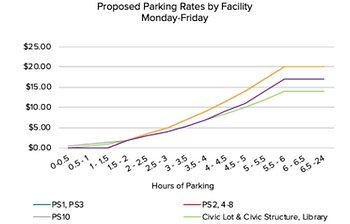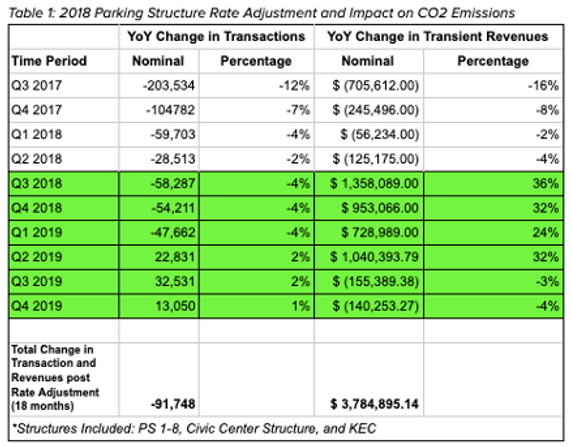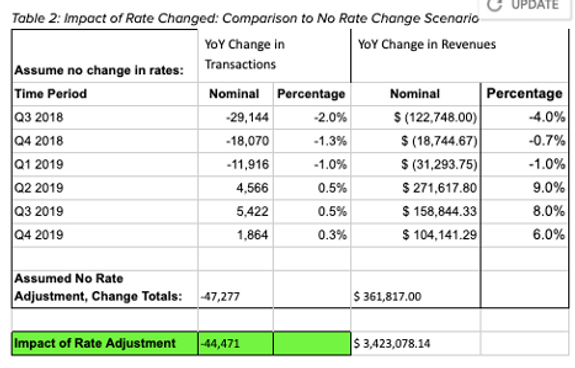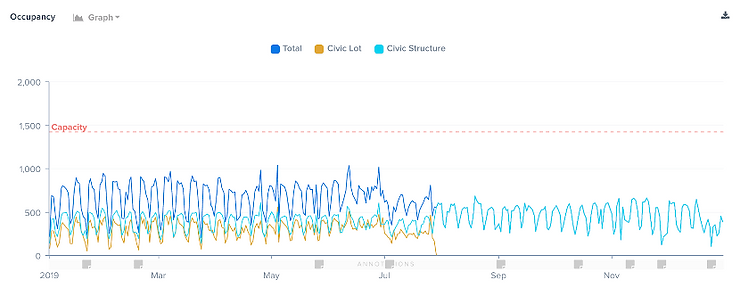City of Santa Monica – Integrated Parking Case Study

Customer Takeaways
JustPark’s Smarking data analytics platform and services have been critical in our parking policy development process. We use Smarking [BI] to track and evaluate every step of the policy change. The ability to understand historical trends and future policy impacts with a wealth of high-resolution data empowers us to keep pace in a rapidly changing mobility ecosystem.
Michael Towler, Senior Administrative Analyst for the City of Santa Monica
Summary
In recent years, the City of Santa Monica has implemented several strategic parking management policies to reduce congestion, cut CO2 emissions, and encourage sustainable land use. JustPark’s Smarking BI solution enabled dynamic parking rates and data-driven policy adjustments to effectively manage parking supply and demand. The use of real-time and historical data helped the city increase parking revenue and improve the efficiency of space utilization. Public acceptance and compliance with new parking regulations has grown, further advancing the city’s urban sustainability efforts.
The Challenge

Balance parking demand and supply more effectively.

Reduce downtown traffic congestion and CO2 emissions.

Support sustainable land use and urban development.
The Solution
Dynamic Pricing Implementation
Data gathered with JustPark’s Smarking BI enabled the city to shift from static parking rates to dynamic pricing. By adjusting parking fees based on real-time demand, the city encouraged parking turnover during peak times and increased availability during off-peak periods. A dynamic pricing approach smoothed out disparities in parking availability, reducing congestion and ensuring a more efficient use of parking resources.

Real-Time Parking Data in Decision-Making
The city used real-time parking data from JustPark’s Smarking BI to guide drivers to available parking spaces efficiently, minimizing the time spent driving around looking for parking. Digital signage and apps directed drivers to less congested areas, effectively cutting down on emissions from idling and cruising.
Scenario Modeling and Data Analysis
Santa Monica conducted scenario modeling using JustPark’s Smarking BI and historical parking data. Insights allowed the city to forecast and plan for different parking demand scenarios and make rate adjustments tailored to specific times and locations. JustPark’s Smarking BI data also revealed parking trends to identify areas where parking could be reduced or repurposed to make room for green spaces, pedestrian zones, or new development projects without overwhelming existing infrastructure. Data from JustPark’s Smarking BI also guided the expansion and enhancement of public transportation routes and facilities.
The Results
Increased Revenue
Rate changes reduced the number of parking transactions by 44,471 in 18 months and led to $3,423,078 in revenue.


Reduced Congestion and Carbon Emissions
Annualized CO2 emissions in metric tons decreased by 303.75 metric tons, amounting to 0.33 percent of the city’s annual reduction goal of 4 percent.
Repurposed Land
Changes prompted 53% of the demand for parking in the city’s Civic Lot to shift to its Civic Structure and the remaining demand to alternate, more sustainable modes of transportation. This shift allowed the city to repurpose the Civic Center Lot as a Civic Center Multipurpose Sports Field and a commemorative area for the historical African American Belmar neighborhood.

In Conclusion
By leveraging JustPark’s Smarking BI solution, the City of Santa Monica successfully implemented dynamic pricing and utilized real-time data to guide policy adjustments and parking management. These changes increased revenue, reduced congestion, and made a notable decrease in CO2 emissions. The approach fostered better space utilization and supported broader sustainability goals and urban development.
Case Study
City of Santa Monica
Data-Driven Decisions for Integrated Parking and Land Use Policy Progress
Who’s Involved
Michael Towler, Senior Administrative Analyst for the City of Santa Monica
Customer Takeaways
JustPark’s Smarking data analytics platform and services have been critical in our parking policy development process. We use Smarking [BI] to track and evaluate every step of the policy change. The ability to understand historical trends and future policy impacts with a wealth of high-resolution data empowers us to keep pace in a rapidly changing mobility ecosystem.
Michael Towler, Senior Administrative Analyst for the City of Santa Monica
Summary
In recent years, the City of Santa Monica has implemented several strategic parking management policies to reduce congestion, cut CO2 emissions, and encourage sustainable land use. JustPark’s Smarking BI solution enabled dynamic parking rates and data-driven policy adjustments to effectively manage parking supply and demand. The use of real-time and historical data helped the city increase parking revenue and improve the efficiency of space utilization. Public acceptance and compliance with new parking regulations has grown, further advancing the city’s urban sustainability efforts.
The Challenge
Balance parking demand and supply more effectively.
Reduce downtown traffic congestion and CO2 emissions.
Support sustainable land use and urban development.
The Solution
Dynamic Pricing Implementation
Data gathered with JustPark’s Smarking BI enabled the city to shift from static parking rates to dynamic pricing. By adjusting parking fees based on real-time demand, the city encouraged parking turnover during peak times and increased availability during off-peak periods. A dynamic pricing approach smoothed out disparities in parking availability, reducing congestion and ensuring a more efficient use of parking resources.

Real-Time Parking Data in Decision-Making
The city used real-time parking data from JustPark’s Smarking BI to guide drivers to available parking spaces efficiently, minimizing the time spent driving around looking for parking. Digital signage and apps directed drivers to less congested areas, effectively cutting down on emissions from idling and cruising.
Scenario Modeling and Data Analysis
Santa Monica conducted scenario modeling using JustPark’s Smarking BI and historical parking data. Insights allowed the city to forecast and plan for different parking demand scenarios and make rate adjustments tailored to specific times and locations. JustPark’s Smarking BI data also revealed parking trends to identify areas where parking could be reduced or repurposed to make room for green spaces, pedestrian zones, or new development projects without overwhelming existing infrastructure. Data from JustPark’s Smarking BI also guided the expansion and enhancement of public transportation routes and facilities.
The Results
Increased Revenue
Rate changes reduced the number of parking transactions by 44,471 in 18 months and led to $3,423,078 in revenue.


Reduced Congestion and Carbon Emissions
Annualized CO2 emissions in metric tons decreased by 303.75 metric tons, amounting to 0.33 percent of the city’s annual reduction goal of 4 percent.
Repurposed Land
Changes prompted 53% of the demand for parking in the city’s Civic Lot to shift to its Civic Structure and the remaining demand to alternate, more sustainable modes of transportation. This shift allowed the city to repurpose the Civic Center Lot as a Civic Center Multipurpose Sports Field and a commemorative area for the historical African American Belmar neighborhood.

In Conclusion
By leveraging JustPark’s Smarking BI solution, the City of Santa Monica successfully implemented dynamic pricing and utilized real-time data to guide policy adjustments and parking management. These changes increased revenue, reduced congestion, and made a notable decrease in CO2 emissions. The approach fostered better space utilization and supported broader sustainability goals and urban development.